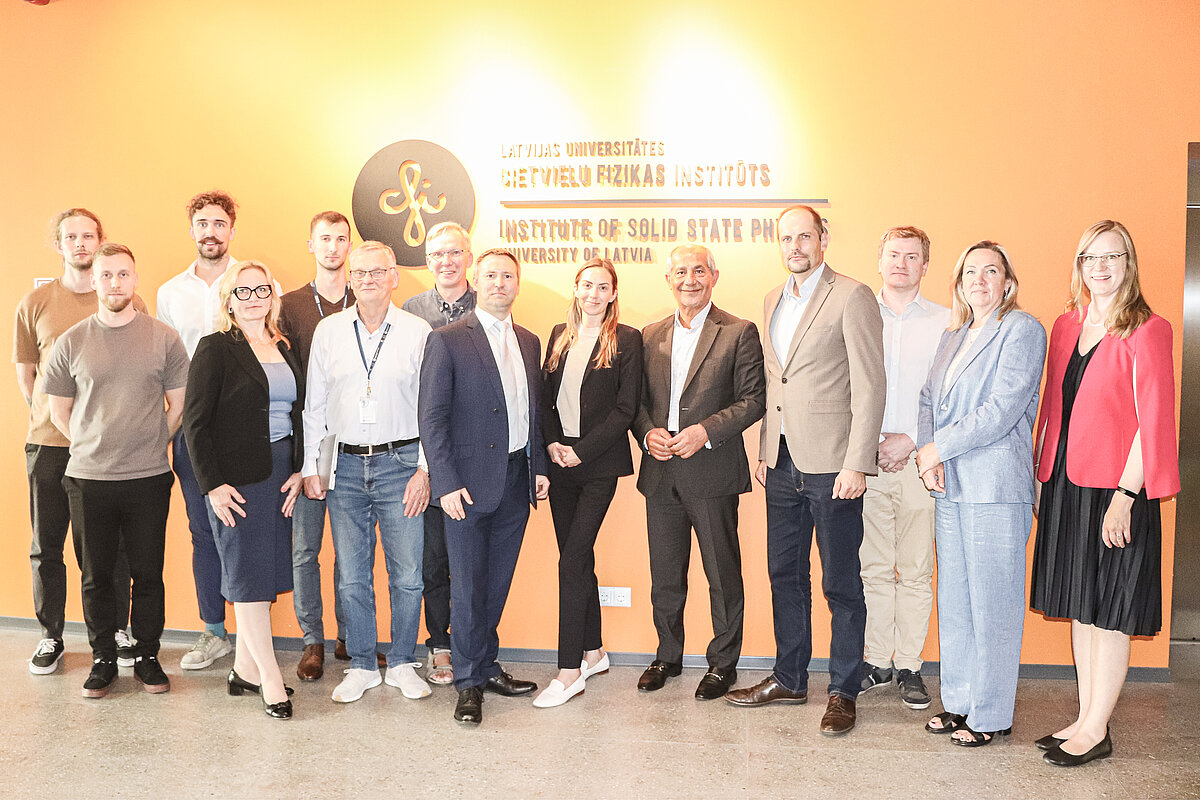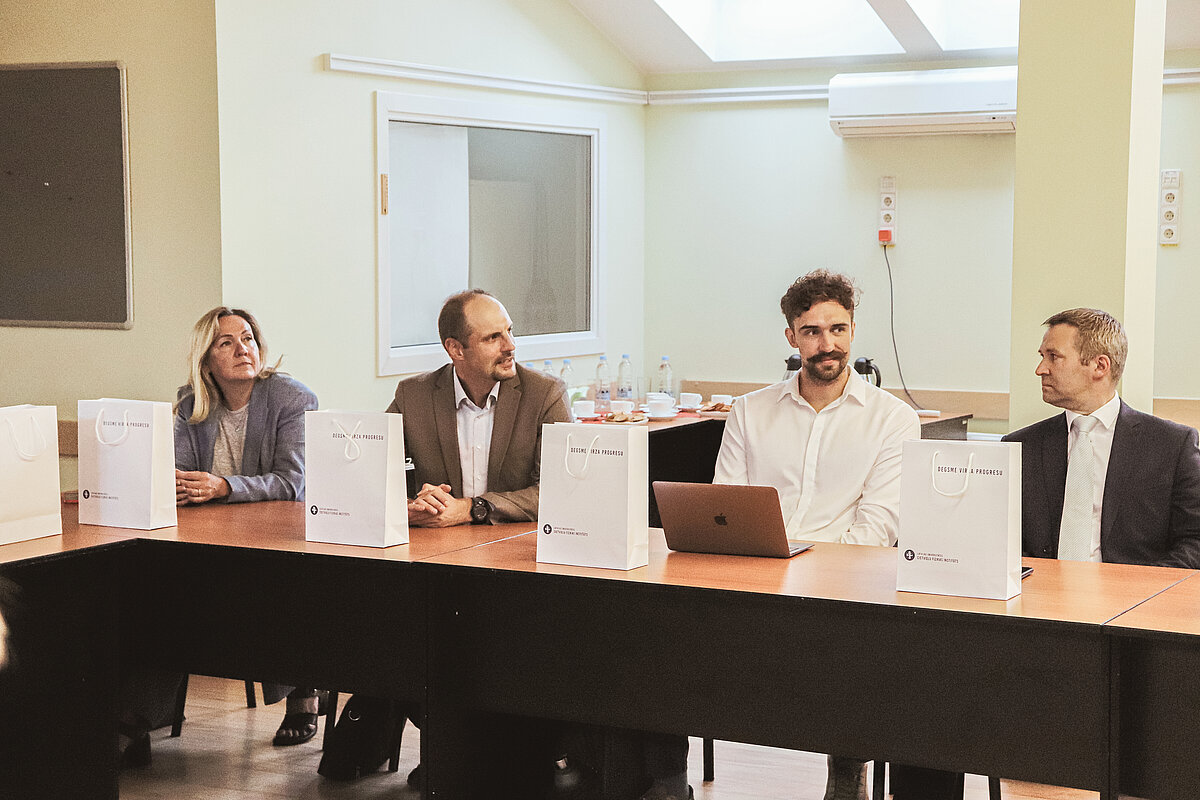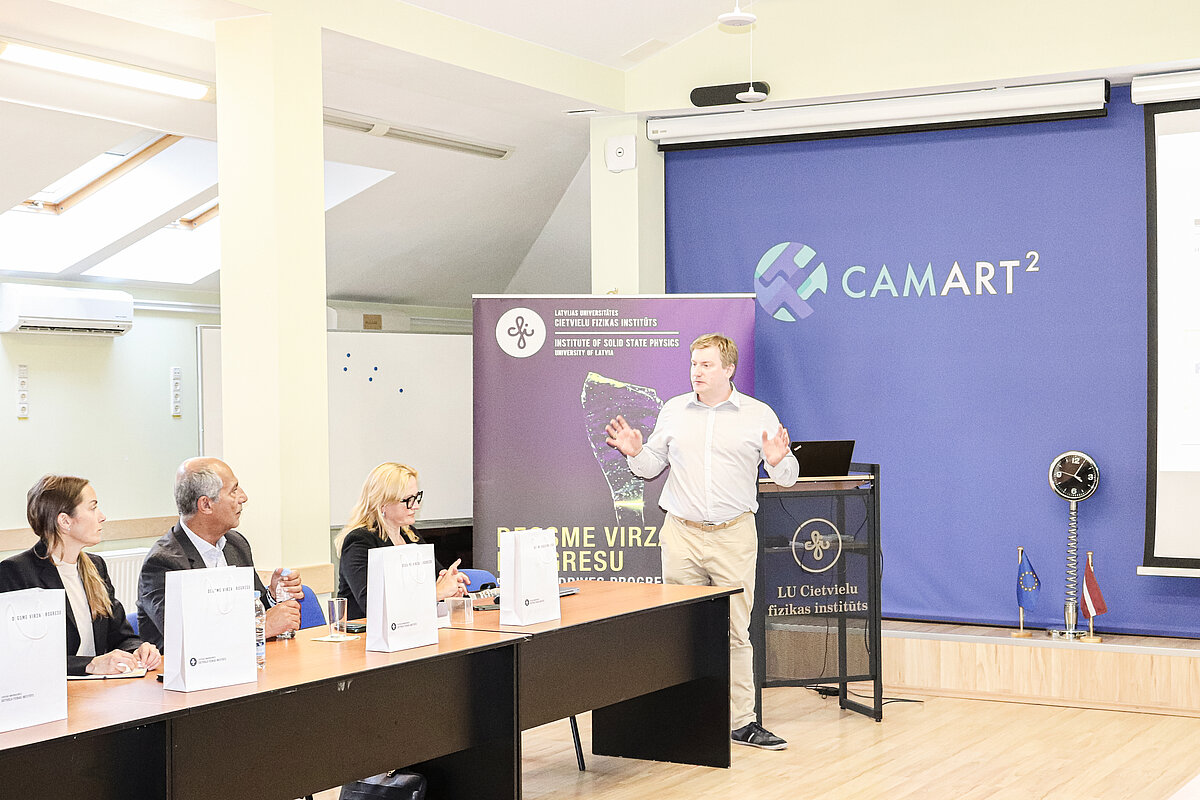
From 27 to 29 August, a delegation of the international microelectronics association "SEMI Europe", led by its President Laith Altimime, visited Latvia to learn about the achievements of Latvian scientists and companies in the development of microchip technologies and to discuss closer cooperation to promote the competitiveness of Latvia and Europe in the global semiconductor value chain.
SEMI is the only global industry association providing a platform to unite the semiconductor ecosystem with the broader $2.8 trillion electronics manufacturing and design supply chain. SEMI helps companies discover new business opportunities, shape meaningful industry trends and policies, and form mutually beneficial partnerships to solve industry challenges. The industry association unites 3,000+ diverse members worldwide – representing raw materials to systems and beyond – and enjoy member discounts and privileges for events, industry communities, market data, and SEMI standards.
On August 28, the "SEMI Europe" delegation visited Institute of Solid State Physics, University of Latvia (ISSP UL), where at the beginning of the visit Aivars Vembris, head of the Organic Materials Laboratory, introduced the guests to the polymer photonics platform and its perspectives. After that, the delegation was addressed by the Director of LIAA Raivis Bremšmits, and the leading expert of LIAA RIS3 specialization area "Photonics and smart materials, technologies and engineering systems" Svetlana Lampiga. She informed about the historical development of photonics and electronics industries in Latvia and in Riga. As example was mentioned VEF - a manufacturer of electrical and electronic products, which was founded in 1919; before World War II, it manufactured a large variety of goods, including Minox — then the world's smallest camera, but after the war, it was the leading communication technology producer in the Soviet Union. Riga semiconductor plant "Alfa" was one of the first enterprises in the former Soviet Union, which began to produce integral chips in the 60s of the 20th century. The leading expert emphasized that today the electronics industry in Latvia has not lost its relevance, which is indicated by the fact that in Latvia in several higher education institutions young people study electronics, robotics, telecommunications and related fields. She also briefly introduced with scientific institutions that are engaged in research in these directions.
After the presentation of the LIAA representatives, the delegation watched a video film about the cleanrooms of the ISSP UL and engaged in a discussion about the potential development directions of ISSP UL and potential areas of cooperation.
At the end of the visit, Arturs Bundulis, the lead researcher of the Organic Materials Laboratory, and Aleksejs Bendins, an engineer at the Micro and Nanodevices Laboratory, presented the prototype to the guests with the "Optical Gas Sensor" (OG Sense), as well as informed about the possibilities of its use and planned development steps.


